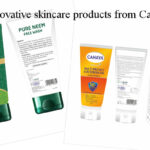Ayurvedic face massage are an excellent way to bring back the glow to listless skin. Face massages provide a youthful look and feel through exfoliation, increased oxygen and nutrient supply to the skin, and muscle toning.


Why opt for a Facial Massage?
Most of us today lead super-hectic lifestyles, continuously multitasking in our professional and personal lives. Excessive stress and extreme environmental pollution negatively impact our skin, especially that of the face. We often end up looking tired with dry, dull, and wrinkled facial skin. Looking and feeling stressed isn’t good either for our health or self-confidence.
How you look often determines how you feel and project yourself to others. Therefore, maintaining your skin is essential. Fortunately, it isn’t a difficult task. Ayurvedic face massages are an excellent way to bring back the glow to listless skin.
How do Facial Massages Work?
Let us understand how a massage works to rejuvenate the skin. Our skin consists of three layers:
Epidermis – this is the outermost layer exposed to the environment. It consists of closely packed epithelial cells and pores.
Dermis – this is the middle layer. It consists of hair follicles, oil and sweat glands, blood vessels, nerve endings, and tissues. The dermis also has collagen and elastin fibres that give shape to our skin.
Hypodermis – this is the innermost layer of connective tissues and fat.
Massages remove dead cells from the epidermis and open blocked pores. The gentle kneading and circulatory motion exercise all 42 facial muscles, making them toned and firm. It also increases the flow of blood and oxygen to the underlying layers.
Massaging allows the natural oil to penetrate deep and provide nourishment to the dermal and hypodermal tissues. Finally, massaging reduces puffiness by draining excess water and mucus from your sinuses. In a nutshell, face massages provide a youthful look and feel through exfoliation, increased oxygen and nutrient supply to the skin, and muscle toning.
Why Have an Ayurvedic Facial Massage?
Traditional Ayurvedic massages are time-tested solutions, validated through thousands of years of usage. Modern-day Ayurvedic products for skin are fine-tuned versions of ancient herbal treatments.
Benefits of Ayurvedic face massages:
1. Ayurvedic massages use non-abrasive, herbal oils, aromatic essential oils, and plant-based scrubs, ideally suited for our skin. These natural products match the human skin’s pH value – as nature intended.
2. Herbal oils, such as coconut, almond, and kumkumadi tailam naturally hydrate your skin, making it soft and supple. Ayurvedic massages are especially beneficial for dry and scaly skin.
3. Ayurvedic massages incorporate the principles of aromatherapy. They generate a deep feeling of well-being. The aromatic oil molecules inhaled during the massage activate the smell receptors, eventually stimulating your brain’s limbic system – the part that controls emotions, appetite, and sexual drive – making you feel at peace.
4. Herbal massage products contain organic nutrients that permeate the skin to nourish and reduce the damage caused by free radicals. With regular home Ayurvedic massages, you can slow down skin ageing and pigmentation.
5. Several of the herbs used in Ayurvedic massages are natural cleansers with proven antimicrobial For example, Neem is an established antibacterial and anti-inflammatory agent that inhibits the growth of ‘Propionibacterium acnes’ – the bacteria that causes acne. Turmeric is another Ayurvedic herb that supports healthy, glowing skin.
6. Leading Ayurvedic companies use state-of-the-art technologies and research to deliver pure, standardized massage products that incorporate the best of traditional Ayurveda with contemporary science.
How to Give Yourself an Ayurvedic Facial massage?
Visiting a massage centre regularly is not feasible nor cost-effective. So, here are a few tips on how to treat yourself to an Ayurvedic face massage.
Preparatory steps:
Identify your Ayurvedic skin type. You could have one or a mix of the following skin type:
Vata: dry and flaky skin; marked by fine lines around the eyes, mouth, and forehead. Prone to cracks and fissures
Pitta: oily skin, especially around the nose, forehead, and chin; marked by pimples, rashes, and prone to acne
Kapha: dull skin, with pale coloration; moist and thick to touch; marked by mild freckles and extreme sensitivity to sunlight
Select a suitable massage oil:
Dry flaky skin: vitamin E-rich Almond oil or virgin coconut oil to hydrate and repair
Skin prone to wrinkles and cracks: Moringa (drumstick seed) oil is rich in protein, vitamin C, and fatty acid – delays ageing; Kumkumadi oil is another choice
Sensitive and oily skin prone to acne: traditional Ayurvedic blends, such as the Manjistha oil, Kanak oil, Kumkumadi oil, works well. Tea tree oil is an effective alternative.
Now follow the steps below:
Step 1. Clean your face with a mild, herbal cleanser or soap. Gently pat dry with a soft towel.
Step 2. Allergic reactions to herbal products are rare. However, to be on the safe side, patch test the herbal massage oil on your hand.
Step 3. Dab small amounts of the oil onto your forehead, cheeks, chin and gently spread
Step 4. Use soft tapping action all over to activate the facial muscles
Step 5. With your index and middle finger gently massage as described below:
- Use a circular motion starting at the centre of the forehead moving outwards to the temples and down to the cheeks
- For the centre of the forehead massage starting between the eyebrows moving upwards to the hairline
- Gently press the bone below the eyes, starting from the outside towards the nose. Follow the shape of the eyes, taking care to not press the delicate areas below the eye.
- Gently press the bone below your eyebrows, starting at the nose moving outwards to the temples
- Massage the chin and lower jaws with a soft rolling motion starting at the chin moving upwards to the base of the nose and the cheekbones.
- Massage the middle section applying mild pressure radiating straight outwards from the nose across cheekbones
Important: always maintain unidirectional motion. Do not go back and forth.
Step 6. Moisten face with rose water (plain water will also do).
Step 7. Finally, apply a herbal moisturizing cream to lock in the moisture.
For best results, we recommend that you make it your daily (alternately 3-4 days a week), pre-bedtime routine.


Dr. Rupali Dhote
Ayurvedic Doctor at Baidyanath.











